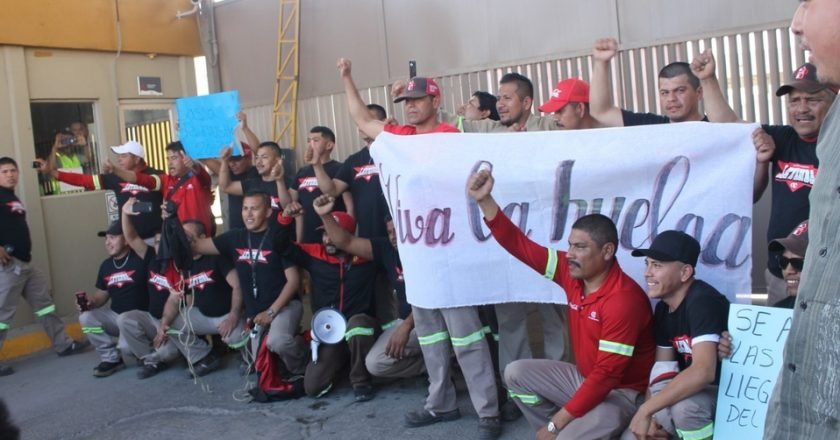You probably haven’t missed it when driving by La Mision in either the free or toll road. How can you? It has a huge horned male creature sticking up in the middle of it, along with several ladies, gargoyles and other satanic statues dancing around.
It is, to say the least, the most interesting and eclectic house around town.
I’m at the gates of the house and I literally didn’t know what to expect; what will the house be like on the inside? What kind of person is the owner?
Once I enter the house and meet Tony Wells, the owner, my whole perception changed. At that point, I realized that my perception of him and the house was created by all the rumors I had heard from people, which were not actually based on reality.
The house on the inside is very well-lit and has beautiful, colored LED lighting all around, with soft Latin music playing on a house-wide Sonos speaker system.
At this point I’m a little confused: wasn’t this a Satanic House?
That is actually the first question I asked Tony and he replied, “Whatever you heard about this house is probably true!” and starts laughing.
I immediately ask about the horned creature that is the most visible sculpture at his house. He tells me its not Satan, but a mix of Pan from the Greek mythology and himself
He takes me to a guest room that has spectacular ocean views and has a fireplace that warms the room. Now, this is starting to actually feel cozy; in fact, this is the opposite of what I had originally thought. I share my feelings with Tony and he laughs, stating “this is where we do the human sacrifices, did I say that out loud?” and he laughs even harder.
After talking to Tony, I noticed that he has heard all the stories about his house, and likes to have fun with it, but I think he likes being controversial the most.
There is no obscure or negative vibe in the house, I even could say that the opposite is true. I toured the rest of the house and noticed the eclectic collection of items in every hall and room within it. I especially noticed the huge collection of chandeliers adorning the house, Tony told me that he invested more than $400K just in chandeliers, and that some are more than 100 years old.
This is definitely not your normal Baja beachfront house; it actually feels a lot like something in between a museum and a home. Every piece of art and item in the house has a story and Tony knows them all. When we get to the master bedroom, he tells me the bed in it was used by the late Elvis Presley and that he got it in an auction for about $450K.
In order to realize his dream, he hired local artists Javier Arellanes, Laura Mas and Javier Filadelfo to build his sculptures, paint them and give them the finishes touches respectively. They work almost every day on projects that “El patron,” as Javier calls Tony, gives them. Even though you won’t find a lot of space to put new things, “El patron” says that the house is still unfinished and still needs some work.
The house also features pieces of artwork from other local artists, every time Tony drives by a place and sees something he likes, he buys it and has it installed in the house. Javier tells me that it would be impossible for them to build every one of the statues in the house itself.
After hanging out with him for a while, engaging in interesting conversation, an idea comes to mind: if this guy is really the devil, we won’t have a chance! He is cool, has a great personality and is kind. There will be long lines to get into his church!
This is not Tony’s first rodeo; he already owns another interesting property in the States, the Alexandra Bordello apartment building in Venice Beach, but that’s in the US where there are lots of rules and regulations to follow, the kind of regulations that wouldn’t allow Tony to completely fulfill his dream project, which is why he decided to build this project in Baja, where he found land that would be the perfect canvas to build his dream home, completely as he imagined it, without limitations.
Of course, not everyone is a fan of his work: many have questioned his style, saying it looks more kitsch than gothic. Everyone has a different opinion about it; some love it while some hate it.
I tell him a story about a post I read on my social media from a Christian friend who said that this was “La Casa del Diablo” or the devil’s house and that he wasn’t even joking. He proceeded to tell me that “Christians are actually my main promoters; they are the ones that have made my house famous so fast. I’ve even had a few knocks at my door from people who say ‘I know what’s going on here!’ – you know – just to complete their sentences a few seconds later with – ‘can we see your house inside?’ – After they meet me and see the house inside, they depart with a whole different idea.”
The property has become a tourist attraction here. In about an hour that I was in there, I saw 10 cars stopping on the road to photograph the house; another 4 groups knocked on the door to see if they could get a glimpse inside the house. Tony says he would like his house to make Baja more interesting for tourists, giving them one more thing to see here in Baja, adding to what we have to offer “It’s my gift to Mexico,” he says.
If you’re interested in getting to know the property, just knock, Tony says he gladly lets people into his house when they ask nicely, although he only does that when he’s there, and he doesn’t live there full-time, so it could be tricky to catch him. Drop by anyway, his staff is always there, and they can tell you if he is there to welcome you into his house.






















